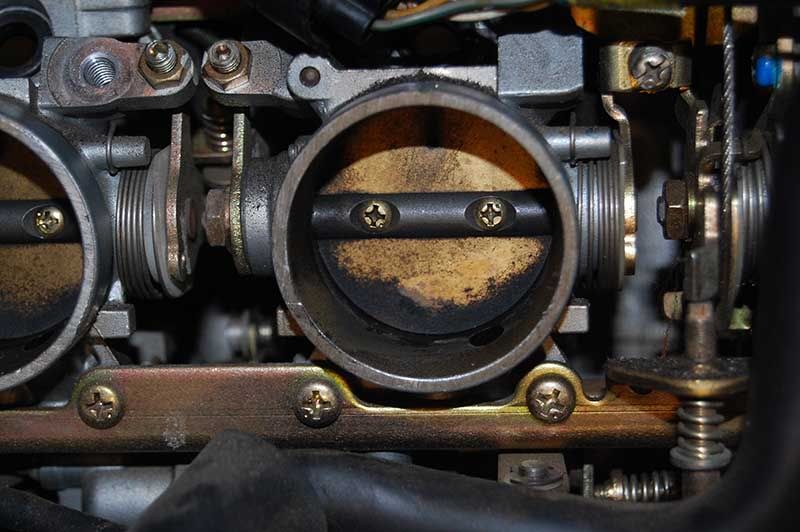3dogs
Well-known member
I want to clean the throttle bodies without disconnecting them from the cyl head. Has anyone removed the airbox and left the throttle bodies in place? How long did this take?
Thanks,
Thanks,
Last edited by a moderator:

I NEED to clean my throttle bodies, since they look like this:Seems like Carver or his step sister Scooter had an issue some years back..Er maybe it was howie? :dribble:
Either way I'd start with a twelve pack and pull stuff outa the way,then grab another 12 and kick it off..............
Followed by loading it on a trailer the next day and letting the dealer fix my attempt.
But that's just me.. :dribble:

Well, that was one of my leading theories too, but based on where the crankcase ventilation hose enters the airbox it seems there should have been that gunk all over part of the interior of the airbox also. And there was none. ???? Static cling on the TBs?Skoot, if you really have no idea, the throttle bodies get nasty because the crankcase breathes into the airbox. Kinda like PCV on a car, but no valve.
I think it's more to do with the baby matter Beemerdons injects into your exhaust pipes..Well, that was one of my leading theories too, but based on where the crankcase ventilation hose enters the airbox it seems there should have been that gunk all over part of the interior of the airbox also. And there was none. ???? Static cling on the TBs?Skoot, if you really have no idea, the throttle bodies get nasty because the crankcase breathes into the airbox. Kinda like PCV on a car, but no valve.
Skoot, if you really have no idea, the throttle bodies get nasty because the crankcase breathes into the airbox. Kinda like PCV on a car, but no valve.
There was some discussion on this, as the inside of my airbox was clean and dry, too, but my intake tract from the front side of the throttle bodies all the way to the intake ports was grungy, cruddy, nasty.Well, that was one of my leading theories too, but based on where the crankcase ventilation hose enters the airbox it seems there should have been that gunk all over part of the interior of the airbox also. And there was none. ???? Static cling on the TBs?
That was my hope. And one reason for installing the Wynpro PEPsSome speculation that the crud is not PCV-related, but rather PAIR related, as in unburned crap being injected back into the intake tract when the PAIR system is active.
True, but the other side of the PAIR valve goes to the clean air side of the Air box. If the PAIR reeds were allowing some back-flow it would be possible for some exhaust gas to be pushed back past the solenoid valve into the airbox.The PAIR air injection port is located in the cylinder head exhaust port right at the exhaust valve and should not be the culprit causing dirty intake tracks.
Enter your email address to join: